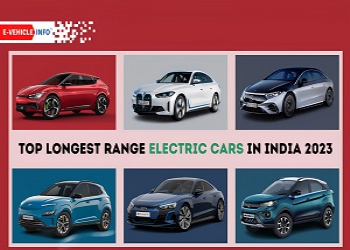Friday, June 04, 2021
By CarKhabri Team

What is the Future of Electric Cars?
Recently the International Energy Agency released its first Global Electric Vehicle Outlook assessing the present and future situation of electric cars across the world. According to the IEA, car sales throughout the world recorded a massive decline due to global pandemic. However, the sales for electric cars recorded an encouraging increase. The agency believes that this trend will continue in the coming decades too.

The major points highlighted in the Global Electric Vehicle Outlook are:
There were more than 11 million registered electric vehicles running on the roads by the end of this year. Among these vehicles 10 million were electric cars. It is speculated that the number of electric four wheelers including (cars, buses, trucks, and vans) will rise to 145 million by the end of this decade. The agency also believes that with an increasing number of initiatives initiated by the governments of different countries this number could even increase up to 230 million by 2030.
The registrations of electric cars went high up to 41% in 2020. Whereas car sales in the entire world recorded a decrease of 16%. The year 2020 was a surprising element for the electric car segment. For the first time European continent emerged as the central point for the electric cars in the world, breaking the dominance of China in the segment. There were more than 3 million electric cars registered in the entire continent.
The main reason for an increase in the demand of electric cars in China, Europe and North America was because of greater emission norms imposed by their respective governments. For example 27% of sales in the Chinese car market is dominated by electric buses. The segment recorded a growth of 9% in 2020. The use of heavy duty trucks has gained a huge popularity in China during recent years. The overall heavy trucks running in European and the United States of America account for 1% of the electric trucks running throughout the world.
The IEA believes that with an increasing shift of people to these vehicles the level of emission will decline up to one-third of the existing emission by 2030. The agency believes that the level of emission can be declined up to two third of the existing emission if all the countries stand up with more determination to clean the environment.
Long Way to Go: Although there is an increase in the use of these vehicles throughout the world, there are certain barriers which are stopping people from shifting to them. The most important barrier in the growth of these vehicles is the absence of appropriate charging infrastructure which is common in all the countries. The second reason is the cost and the supply of batteries used in these vehicles. Although the cost of batteries is declining, their production in line with the production of electric cars is less. This is mainly due to the slow supply of the raw materials used for developing the batteries. The political and economical conditions of these countries are volatile and fragile.
Another matter is recyclability of the batteries. As these batteries have lots of Lithium-ion cells it is difficult to dismantle them. However with changing time the electric car manufacturers are working on recycling these batteries.
Summing-Up: Based on the current situation the manufacturers are learning the lessons from the failures and with advancement of technology they are overcoming the drawbacks. Therefore we can expect that by the end of this decade electric car segment will enjoy the expected success to a huge extent.



Comments (0)